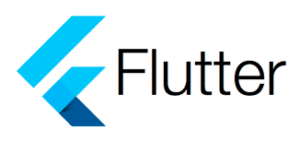Question:
I’m currently working on implementing a custom clip path in Flutter using CustomClipper<Path>, but I’m facing an issue where the horizontal lines in my shape aren’t rendering perfectly straight. Below is a detailed description of the problem and what I’ve tried so far:
Problem Description:
I have developed a CustomClipPath class to define a custom shape using Path commands such as moveTo and lineTo. The shape includes both horizontal and vertical lines that outline its form. However, upon rendering the shape, I’ve observed that the horizontal lines display slight diagonal segments instead of maintaining a straight path across the screen width.
What I Tried:
I structured the CustomClipPath class to specify the shape using various Path commands, adjusting coordinates within lineTo to position the shape’s vertices accurately.
What I Expected:
I anticipated that the CustomClipPath would render a shape with perfectly straight horizontal lines extending evenly across the screen width, adhering to the proportions defined within the Path.
What Actually Resulted:
Upon rendering, the horizontal lines within the shape exhibited minor diagonal deviations instead of remaining perfectly straight.
Image
Code Example:
import 'package:flutter/material.dart';
class CustomClipPath extends CustomClipper<Path> {
@override
Path getClip(Size size) {
Path path = Path();
path.moveTo(0, size.height * 0.30);
path.lineTo(size.width * 0.10, size.height * 0.20);
path.lineTo(0, size.height * 0.10);
path.lineTo(size.width, 0);
path.lineTo(size.width, size.height);
path.lineTo(0, size.height);
path.lineTo(size.width * 0.10, size.height * 0.90);
path.lineTo(0, size.height * 0.80);
path.lineTo(0, size.height);
path.close();
return path;
}
@override
bool shouldReclip(covariant CustomClipper<Path> oldClipper) {
return false;
}
}
class ClipPathExample extends StatelessWidget {
@override
Widget build(BuildContext context) {
return ClipPath(
clipper: CustomClipPath(),
child: Container(
width: MediaQuery.of(context).size.width,
height: MediaQuery.of(context).size.height,
color: Colors.blue, // Example background color
),
);
}
}
void main() {
runApp(MaterialApp(
home: Scaffold(
appBar: AppBar(
title: Text('Custom Clip Path Issue'),
),
body: ClipPathExample(),
),
));
}
Actual Task:
I aim to achieve a clip path similar to a desired outcome, where horizontal lines are perfectly straight across the screen width.
Image
Additional Details:
- Device/Emulator: Flutter Desktop, Web, Mobile
Attempts Made:
I experimented with different coordinates and proportions within the CustomClipper<Path> class to align the horizontal lines accurately. Despite these adjustments, I have not been able to achieve the desired straight-line effect.
I’m seeking advice and insights on how to modify my CustomClipper<Path> implementation effectively to ensure the horizontal lines render perfectly straight as intended. Any guidance or suggestions would be greatly appreciated. Thank you for your assistance!

 Question posted in
Question posted in 

2
Answers
Try the following path, then adjust the values to match the desired result:
Note: the (white area) at the left of the form is about (0.05 of the width of the form being clipped).
Lest look at this getClip function, which will recreate provided design with straight lines:
I numbered lines so it is easier to explain.
First of all, it’s important to note that the path starts from position (0, 0) by default. In your original example, you used moveTo to a custom position, which is why the upper boundary wasn’t straight initially.
Now, let’s go step-by-step:
0 – Draw line to upper-right corner of screen. It will be upper boundary.
1 – Draw line to bottom-right corner of screen. It will be right boundary.
2 – DrawLine to bottom-left corner of screen. It will be bottom boundary.
Things starting to get interesting here! To adjust the dimensions of the "white triangles," you’ll need to modify one of the following steps:
3 – Draw line inward the screen forming one side of the triangle. If you want this triangle to extend further towards the middle of the screen, you should increase
width. If you want this triangle to be taller – decrease height property.4 – Draw line back to screen’s left boundary.
5 – Draw line upwards until reaching the second "white triangle."
6 – This step is similar
step 3. Want triangle to be deeper? Same with width – increase it. With height, it is opposite to step 3 – you should increase .7 –
close()will draw line to starting position which is(0, 0)That’s all. Pay attention to steps 3 to 6 to modify your custom figure